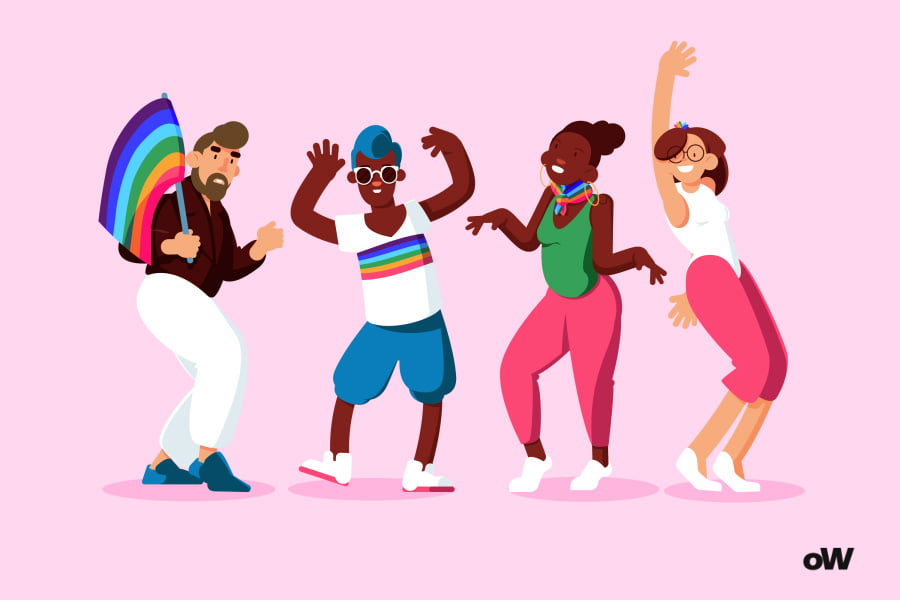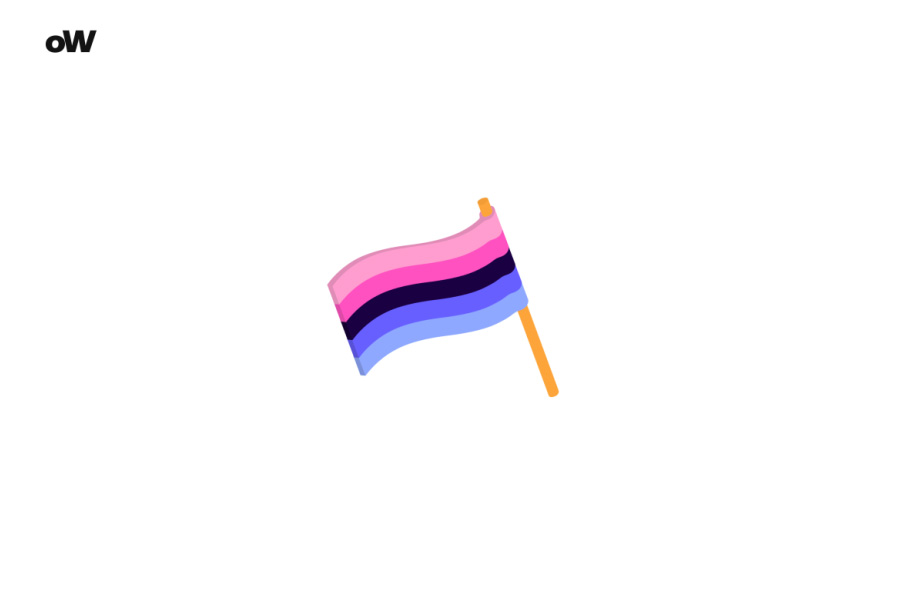Quiz: Am I Bigender?

Imagine your gender identity is an artist’s palette. What if instead of one bright color, you see a whole rainbow of shades? Today, we’ll embark on a journey through the world of bigenderism, armed not with a brush and paints, but with curiosity and a quiz. Are you ready to color your understanding of gender with new hues?
What is Bigender?
Bigenderism is a complex and multifaceted form of gender identity that goes beyond the traditional binary understanding of gender. Bigender people feel they belong simultaneously or alternately to two genders, most often male and female, but not necessarily.
Why is this important to understand? In modern society, where gender roles and expectations are still strong, bigender people often face misunderstanding and discrimination. Recognizing and accepting bigenderism as a valid identity is a key step towards creating a more inclusive society.
How does bigenderism manifest? This can vary from person to person. Some bigender individuals experience a constant sense of belonging to both genders, while others may “switch” between gender identities. This can affect their self-expression, behavior, clothing preferences, and even how they interact with others.
Why do people identify as bigender? It helps them better understand themselves, find a community of like-minded individuals, and live an authentic life. Moreover, open discussion of bigenderism contributes to expanding public understanding of gender diversity.
Who can be bigender? Any person, regardless of biological sex, age, race, or sexual orientation. It’s important to note that bigenderism is an internal feeling, not a choice or a phase.
What Is This Quiz About?
The “Am I Bigender?” quiz is a self-discovery tool developed by psychologists and gender identity researchers. Its goal is to help people exploring their gender identity better understand their feelings and experiences.
Why are such quizzes important? They provide a structured way to reflect on one’s feelings and experiences related to gender. In a society where discussion of gender identity is often taboo, such tools can be the first step towards self-knowledge and self-acceptance.
How does the quiz work? It usually contains a series of questions concerning various aspects of gender identity and self-expression. Questions may include:
- How do you feel when you’re called “he” or “she”?
- Do you experience discomfort with your physical body?
- Do you feel that your gender identity changes over time?
- How do you envision yourself in the future in terms of gender?
Why take such a quiz? It can help:
- Structure your thoughts and feelings about gender identity.
- Identify patterns in your experience that may indicate bigenderism.
- Get a starting point for further exploration of your identity.
- Find resources and information relevant to your experience.
Who develops such quizzes? It’s a team consisting of psychologists, gender researchers, LGBTQ+ community activists, and bigender individuals themselves. This ensures a comprehensive approach to creating questions and interpreting results.

Signs of Bigenderism
Understanding the signs of bigenderism is critically important both for bigender people themselves and for society as a whole. Here’s a more detailed breakdown of possible indicators:
Gender Fluidity
Why is this important? Bigender people often experience changes in their gender identity. How does this manifest? A person may feel male in the morning and female in the evening, or these changes may occur over days or weeks. Where might this be noticeable? In choice of clothing, manner of speech, behavior, and social roles.
Gender-Related Dysphoria and Euphoria
What is this? Dysphoria is discomfort associated with a mismatch between gender identity and physical body or social perception. Euphoria is a feeling of joy and comfort when gender identity is recognized and affirmed. Why is this important to understand? These feelings can be key indicators of bigenderism. How might this manifest? A person may experience dysphoria when perceived only as a man or only as a woman, and euphoria when their gender complexity is recognized.
Desire to Have Physical Characteristics of Both Sexes
Why might this be a sign? Many bigender people want their body to reflect both aspects of their identity. How might this be expressed? In a desire to have an androgynous appearance or in aspiring to combine typically male and female features. Who can help with this issue? Endocrinologists and surgeons specializing in gender-affirmative medicine.
Difficulties With Pronoun Choice
Why is this important? Pronouns are an important part of gender identity. How does this manifest in bigender individuals? They may prefer using different pronouns at different times or using neutral pronouns. Where might this cause difficulties? In communicating with others, especially in languages with strong gender specificity.
Complex Relationships With Gender Roles
What does this mean? Bigender people may feel comfortable in different gender roles in different situations. How might this manifest? In the professional sphere, a person may prefer a traditionally male role, while in personal life – a female one. Why is this important to understand? It helps create a more flexible and inclusive work and social environment.
Interest in Gender-Neutral Clothing and Accessories
Why might this be a sign? Bigender people often seek to express both aspects of their identity through appearance. Where might this manifest? In choice of clothing, hairstyle, makeup. How does this affect the fashion industry? There’s a growing demand for gender-neutral clothing and accessory lines.
Feeling of Not Fitting Into Binary Gender Categories
What does this mean? Bigender people may feel that they don’t fully fit into either the “male” or “female” category. How does this affect their lives? It can cause feelings of isolation and misunderstanding in a society oriented towards a binary gender system. Why is it important to be aware of this? Understanding this experience can help create more inclusive social structures and policies.

If You Identify as Bigender
Recognizing oneself as bigender can be both liberating and frightening. Here are more detailed recommendations for those who identify as bigender:
- Self-knowledge and self-acceptance: Why is this important? Self-acceptance is a key step towards psychological well-being. How to achieve this? Journaling, meditation, art therapy can help better understand your feelings. Where to seek support? Psychotherapists specializing in gender issues can provide professional help.
- Education and information: Why is this necessary? Knowledge is power. Understanding bigenderism will help you advocate for your rights and explain your identity to others. Where to look for information? Academic research, books, online resources from LGBTQ+ organizations. How to apply this? Use the knowledge gained for self-advocacy and educating those around you.
- Expressing gender identity: Why is this important? Self-expression is a key aspect of living authentically. How to do this? Experiment with clothing, hairstyles, pronouns to find what’s comfortable for you. Where might this be challenging? At work, in family, in public places. It’s important to find a balance between self-expression and safety.
- Legal and medical aspects: What do you need to know? Laws on gender identity and expression vary in different countries and regions. Where to seek help? Lawyers specializing in LGBTQ+ issues can provide necessary information. How does this affect healthcare? It’s important to find doctors who understand the specifics of bigender identity.
- Interacting with family and friends: Why can this be difficult? Close people may not immediately understand or accept your identity. How to approach this issue? Be patient, provide information, give them time to process. Where to seek support? Family therapists specializing in LGBTQ+ issues can help in this process.
- Professional life: Why is this important? The workplace is a significant part of our lives, and it’s important to feel comfortable there. How to approach the issue of openness at work? Assess company culture, study diversity and inclusion policies. Where to seek support? HR departments, unions, LGBTQ+ resource groups in the company.
Remember that each journey is unique, and there’s no “right” way to be bigender. It’s important to find what works for you and remember that your identity is valid, regardless of how you choose to express it.
How to Play?
Click the "Start Quiz" button and answer each quiz question honestly. There are no right or wrong answers. You may encounter multiple-choice questions or statements to rate on a scale of agreement. Once you finish the quiz, you'll receive results that provide insight into your personality traits, including strengths and weaknesses. Use this information to increase self-awareness and make positive changes.
How many questions does this quiz have?
15 Questions
How long does it take to complete this quiz?
6 Minutes
Questions Overview
- As stable as a rock. Always the same.
- Like a roller-coaster. Up and down, this and that!
- Not sure, but it changes occasionally.
- It's a topic I've never really pondered on.
- One solid tune that never changes.
- A wild mix of two distinct tracks.
- A varied playlist with a couple of repeated favorites.
- Muzak - it's just there in the background.
- Strictly according to one gender norm.
- A cocktail of male and female clothing elements.
- It changes, but not frequently.
- Whatever's clean and comfy!
- A man-cave or a she-shed.
- Both a man-cave and a she-shed!
- A flex space that changes its theme.
- Just a comfy couch, honestly.
- Yup, that’s me!
- Well, you're half right, half of the time.
- Sometimes it matches, sometimes it doesn't.
- I rarely notice or care.
- Two dogs.
- A cat and a dog living harmoniously.
- Maybe a dog now, maybe a cat later.
- A goldfish. Simple.
- Singular and clear.
- A blend of two very different personas.
- A spectrum with a couple of dominant feelings.
- Haven't given it much thought.
- A knight or a princess, sticking to one role.
- A shape-shifter, transitioning between two distinct forms.
- A mage, mastering a couple of elemental skills.
- An adventurer, going with the flow.
- They help me choose what’s right for me.
- I'll take one of each, thanks!
- Depends on the product and the day.
- I just choose what works, regardless of the label.
- A character that aligns with your birth gender.
- Dual roles – showcasing both male and female personas.
- Depends on the script and mood.
- The tree in the background.
- One consistent gender identity.
- The balancing act of feeling like two genders.
- A mix of feelings and experiences.
- Mostly doodles and day-to-day stuff.
- -
- A specific, traditional cultural experience.
- A mix of two very different destinations, like hiking mountains and lounging at the beach.
- A versatile destination with a couple of main attractions.
- Anywhere peaceful.
- Firmly align with one viewpoint.
- Always find yourself explaining the duality you feel.
- Are open but have a couple of dominant feelings.
- Listen more than you speak.
- A creature known for its singular nature, like a unicorn.
- A hybrid like the centaur or mermaid, combining two entities.
- A creature with varied stories and interpretations.
- I've never picked a favorite.
- Stick to one theme or medium.
- Juxtapose masculine and feminine art pieces side by side.
- Offer a mix, with a couple of recurring styles.
- Be a potpourri of anything and everything.





